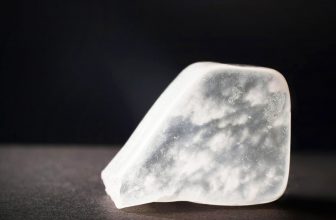Discovering the Soft Wonders: Minerals with a Mohs Rating of 1.5

Gypsum: The Essential Builder’s Friend
Gypsum, with a Mohs hardness of 1.5 to 2, is a superstar in construction. You might not realize it, but this mineral is the main ingredient in plaster and drywall, materials that make up the walls of our homes and offices. Gypsum is also used to make cement and as a soil conditioner in agriculture. Despite its softness, gypsum is a crucial component in building a sustainable future.
Sulfur: The Bright Yellow Marvel
Sulfur is another fascinating mineral with a Mohs rating of 1.5 to 2. This bright yellow element has a distinct smell often associated with volcanic areas and hot springs. Sulfur plays a vital role in the production of fertilizers, chemicals, and even in the vulcanization of rubber. It’s a key player in many industrial processes, making it a mineral of significant economic importance.
Why Softness Matters
You might wonder, why should we care about these soft minerals? Well, their softness often makes them easy to work with, mold, and shape. This property is invaluable in manufacturing and crafting. For example, gypsum’s softness allows it to be easily shaped into intricate architectural details, while sulfur’s pliability makes it ideal for various industrial applications.
The Beauty of Understanding Softness
By studying minerals with a Mohs rating of 1.5, we gain insights into their practical applications and their role in our daily lives. These gentle giants, though not as hard as diamonds, contribute immensely to our world. So next time you see a piece of drywall or smell that distinctive sulfur scent, you’ll appreciate the soft yet significant impact of these minerals.





















